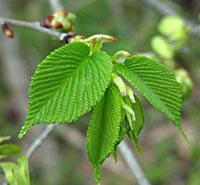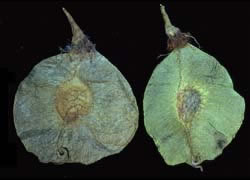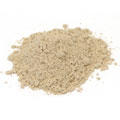Slippery Elm
(Ulmus rubra or Ulmus Fulva)
(For Educational Purposes only)
- Alias names for Slippery Elm: Indian elm, Moose elm Sweet elm, Red elm, Rock elm, Sweet elm, Winged elm, Gray elm, Soft elm, Ulme, Ecorce d’Orme (France), Ulmenrinde (German) Family: Urticaceae
- Chinese Names for Slippery Elm: Not found
Pictures of Slippery Elm:
References for Slippery Elm pictures:
- Slippery elm leaf: https://www.globalherbalsupplies.com/herb_information/slippery_elm.htm
- Slippery elm bark: https://www.ezherbs.net/archive%20herb%20of%20the%20month/08/slipperyelm.htm
- Slippery elm seeds: https://www.depauw.edu/univ/naturepark/natural%20history/elm.asp
- Slippery elm bark powder: https://www.starwest-botanicals.com/product/1-slippery-elm-bark-powder.html (This is where I order my stash from.)
- Slippery elm tree: https://aggie-horticulture.tamu.edu/ornamentals/natives/ulmusrubra.htm
About Slippery Elm:
Slippery elm is a neutral/sweet, gentle and effective remedy for mucous membrane irritations on both the outside and inside of the body. Native American Indians used it as a poultice for wounds, boils, ulcers, inflamed eyes as well as for fevers, cold and bowel complaints. What I love most about slippery elm is that it creates huge amounts of mucilage (boogers) that coats and protects the surfaces. Some of my clients who have used it have complained that it dries out and pulls the skin when used as a poultice but I tell them they need to keep it moist and recommend they spray the wrap with distilled water 2-3 times a day to keep it moistened.
Slippery elm is a native of Canada but lots of it is grown in Michigan, the Appalachian Mountains, Florida and in Texas. It grows on high ground and in dry soil but really likes moist ground as well. These days it’s difficult to find a large specimen tree because they are susceptible to several diseases and harvesting the bark deforms or kills the tree. The inner bark of the trunk and branches are collected in spring.
Actions and Uses of Slippery Elm: (Primary actions are on the nerves, stomach and lungs.)
- Anti-inflammatory
- Antiseptic (inhibits or kills harmful microorganism on living tissue)
- Demulcent (soothes inflamed mucous membranes and protects them from irritation)
- Diuretic (increases urinary flow and helps to alleviate fluid retention)
- Emollient (an agent used externally to soften and soothe)
- Expectorant
- Laxative
- Mild emmenagogue (induces menstruation)
- Mucilage: When the herb comes into contact with inflamed membranes or tissues it soothes, coats, and protects the area and draws out toxins and irritants. Some think there is a reflex action to taking slippery elm orally. It is thought that it may affect the nerve endings in the stomach and intestines to somehow cause secretion of mucous into the urinary tract.
- Nutritive: this is one of Dr. Christopher’s favorite treatments for people who are convalescing or are experiencing failure to thrive and those who are not assimilating nourishment. This pale pink-brown gruel can be mixed with a little honey and cinnamon to make it taste better although it doesn’t taste that bad anyway. Some people also use it as baby food!
- Remedy for lung diseases
Historical Uses of Slippery Elm and How it Works: Slippery elm is used dried and powdered, in decoctions, liquid extracts, ointments, poultices, powders and in tablets. The fine powder is used internally and the more coarse powder is best used externally.
Internally Slippery Elm Bark has been used for:
- Acid Stomach
- Bleeding from the lungs
- Boosting the adrenal glands
- Bronchitis
- Builds up the body and prevents wasting
- Chest disorders
- Chronic cystitis
- Colic
- Constipation
- Coughs
- Crohn’s disease
- Cystitis
- Diarrhea (it can be used in enemas)
- Digestive problems in infants
- Diverticulitis
- Drawing out impurities
- Dysentery
- Enteritis
- Gastric catarrh
- Gastritis
- Gastrointestinal irritation
- Healing all parts of the body
- Heart remedy when combined with other herbs
- Hemorrhoids
- IBS (Irritable Bowel Syndrome)
- Inducing sleep (if taken at night)
- Irritation of the mucous membranes of the stomach and intestines
- Irritation of the pharynx
- Irritation of the urinary tract
- Mucous colitis
- Neutralizing stomach acids
- Nutritive gruel for children, invalids and convalescents
- Pleurisy
- Puts a protective mucilaginous lining over the stomach and esophagus
- Reduces over-activity in the bowel, via a nerve reflex action
- Soothes all mucous membranes
- Soothes coughs (Thayer’s Throat Lozenges contain Slippery Elm Bark)
- Soothing after the discomfort of vomiting
- Soothing to the whole respiratory system
- Sore throats
- Tuberculosis
- Ulcers, duodenal
- Weakness, all cases
Externally it is used as a poultice, ointment or wash for:
- Abscesses
- All inflammations
- Boils
- Burns
- Chilblains (Say what? Oh, localized painful swelling and itching on the fingers, toes or ears secondary to mild frostbite.)
- Congestion
- Drawing poultice for boils and splinters
- Eruptions
- Gangrenous wounds
- Poison ivy
- Purulent ophthalmia (pus in the eye)
- Skin cancers
- Skin diseases
- Suppurations
- Swollen glands
- Ulcers (like bed sores)
- Wounds
Parts of Slippery Elm Plant Used:
Inner bark is most effective but sometimes this is cut with the less-effective outer bark to extend the volume. The tree and bark have been used to make canoes, baskets, and other household goods.
Chemical Constituents of Slippery Elm:
- Astringent tannins
- Calcium phosphate
- Mucilage
- Starch
Contraindications, safety issues, concerns, harmful drug interactions and allergy precautions for Slippery Elm: Slippery elm is quite safe but because it is so mucilaginous it may interfere with the absorption of medicine if taken at the same time.
Other Notes for Slippery Elm: The American Indians used the bark and as a food called Oohooska meaning ‘to slip’. And, I don’t know how it was used but one resource said that the Indians used the bark as a mechanical irritant and abortifacient to abort half-breed babies when the settlers reproduced with the Indians. Gross. Because of this, the bark is now banned in some countries. This species can be damaged by aphids, caterpillars, gall mites, fungal infections and Dutch elm disease.
Cultivation of Slippery Elm: This Elm can grow 20-50 feet in rich, deep soil in a sunny area. It is hardy to -35 degrees F. It is hardy in zones 3-9. Propagate by sowing the seeds, layering or suckers in the fall or by starting semi ripe cutting in the summer. They can also be grafted. It grows best near streams and other moist areas. The bark is brown and rough outside with thick, soft, yellowish-white, and very mucilaginous bark on the inside. Leaves are opposite, ovate-oblong, taper-pointed, four to eight inches long, doubly serrate, very rough on the top and soft-downy underneath, strongly marked with straight veins. Younger branches and buds look downy. Flowers are reddish, in small and nearly sessile lateral clusters, appearing before the leaves; corolla wanting (whatever that means) and calyx bell-shaped, with seven to nine lobes. The Elm fruit is a one-celled and one-seeded samara, two-thirds of an inch in diameter, the wing extending all around (see picture above). Elm wood is reddish and tough.
Helpful Links and References for Slippery Elm:
- https://www.henriettesherbal.com/eclectic/cook/ULMUS_FULVA.htm
- https://www.backyardgardener.com/plantname/pda_7765.html
These products are not drugs, but foods for special dietary use pursuant to applicable Federal law. No statement in this page shall be construed as offering these products for the diagnosis, cure, mitigation, treatment, or prevention of any disease.



